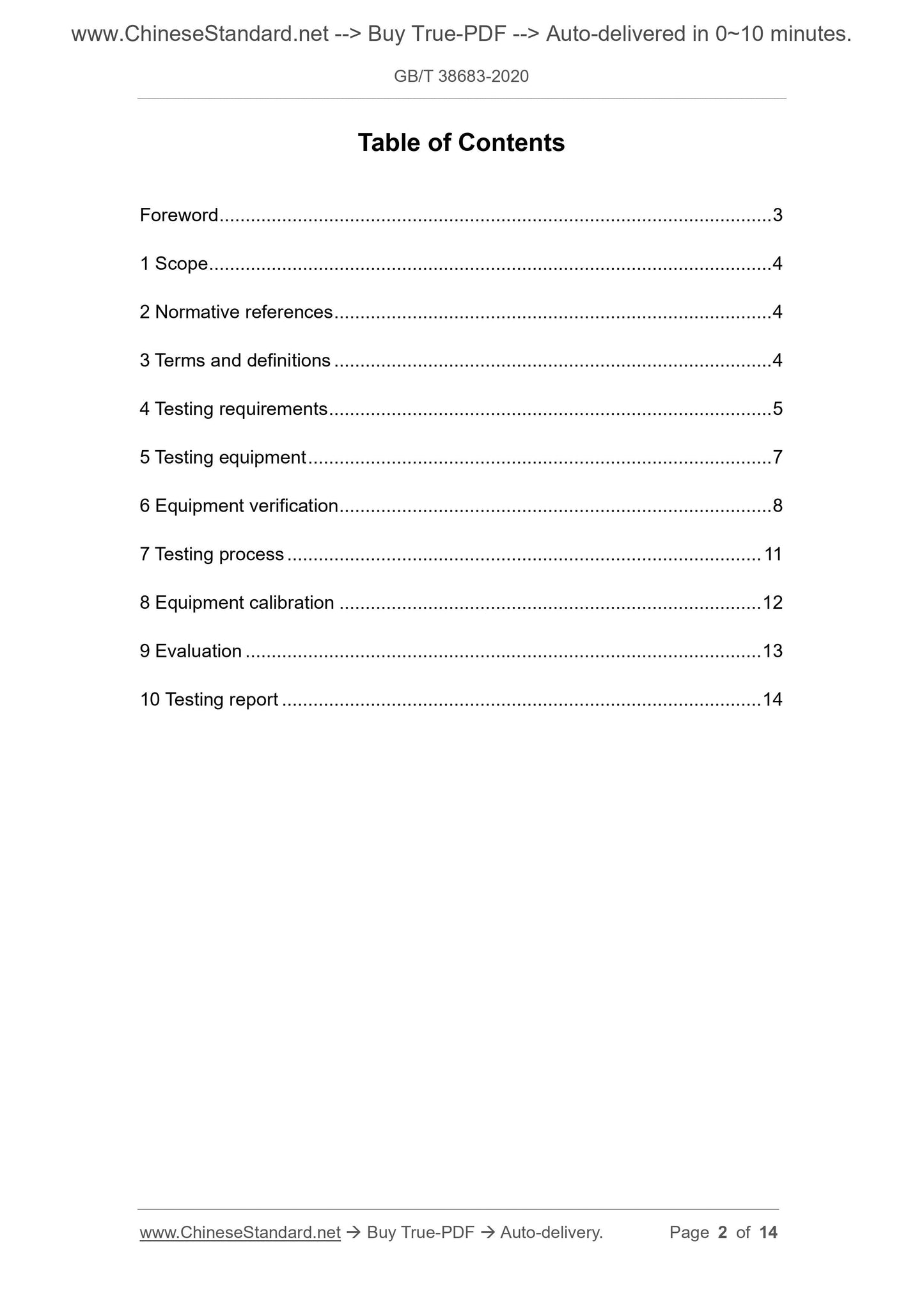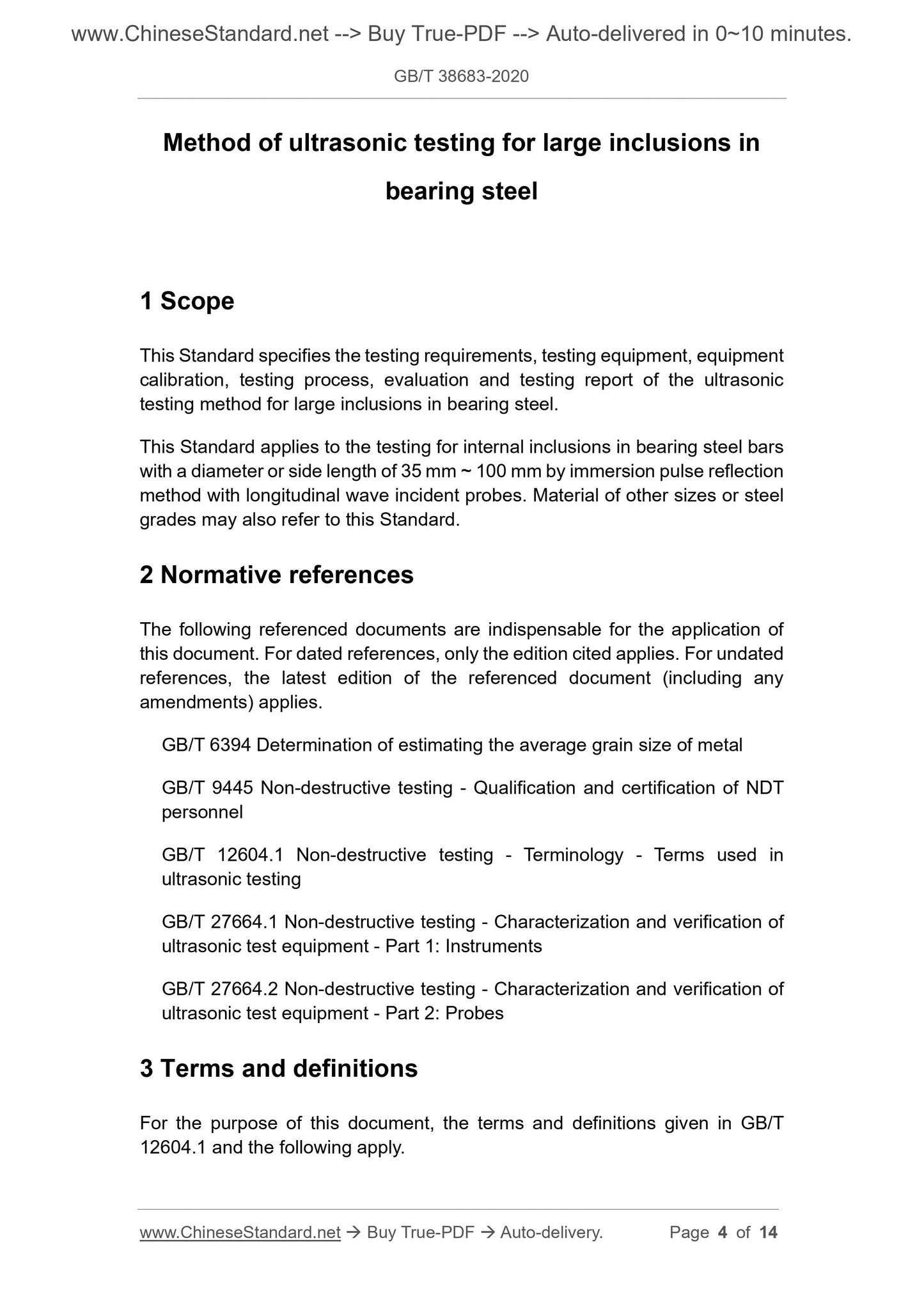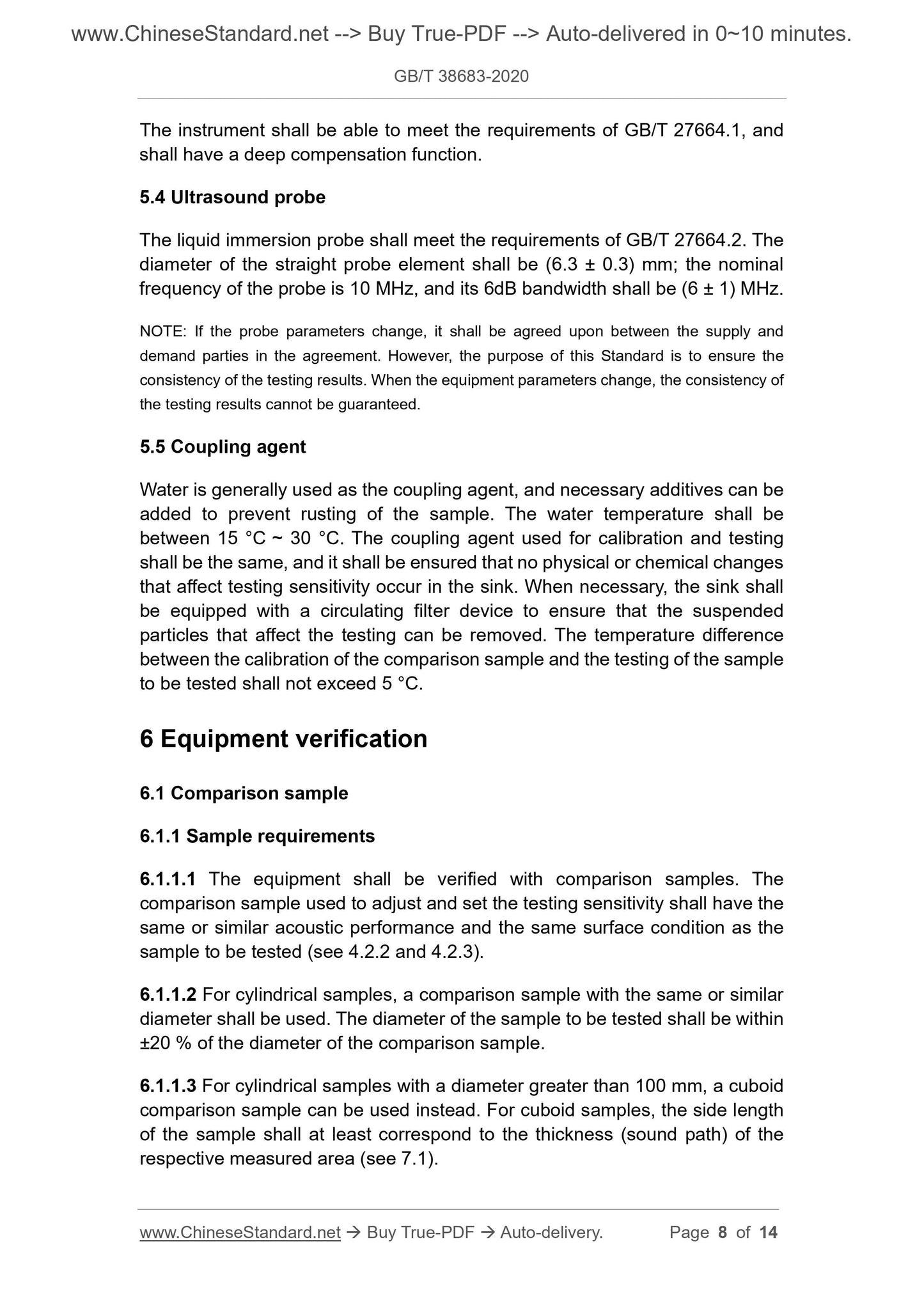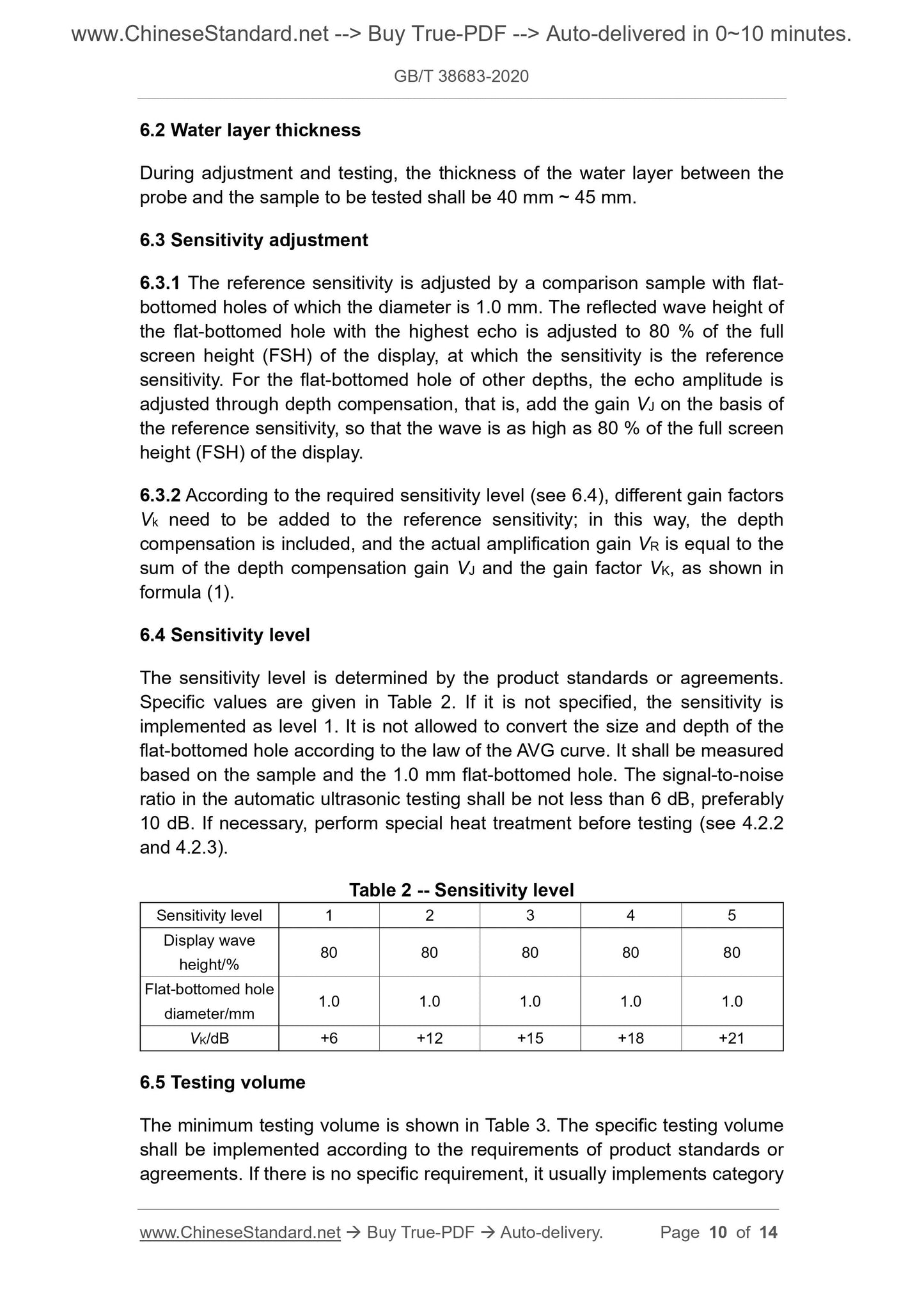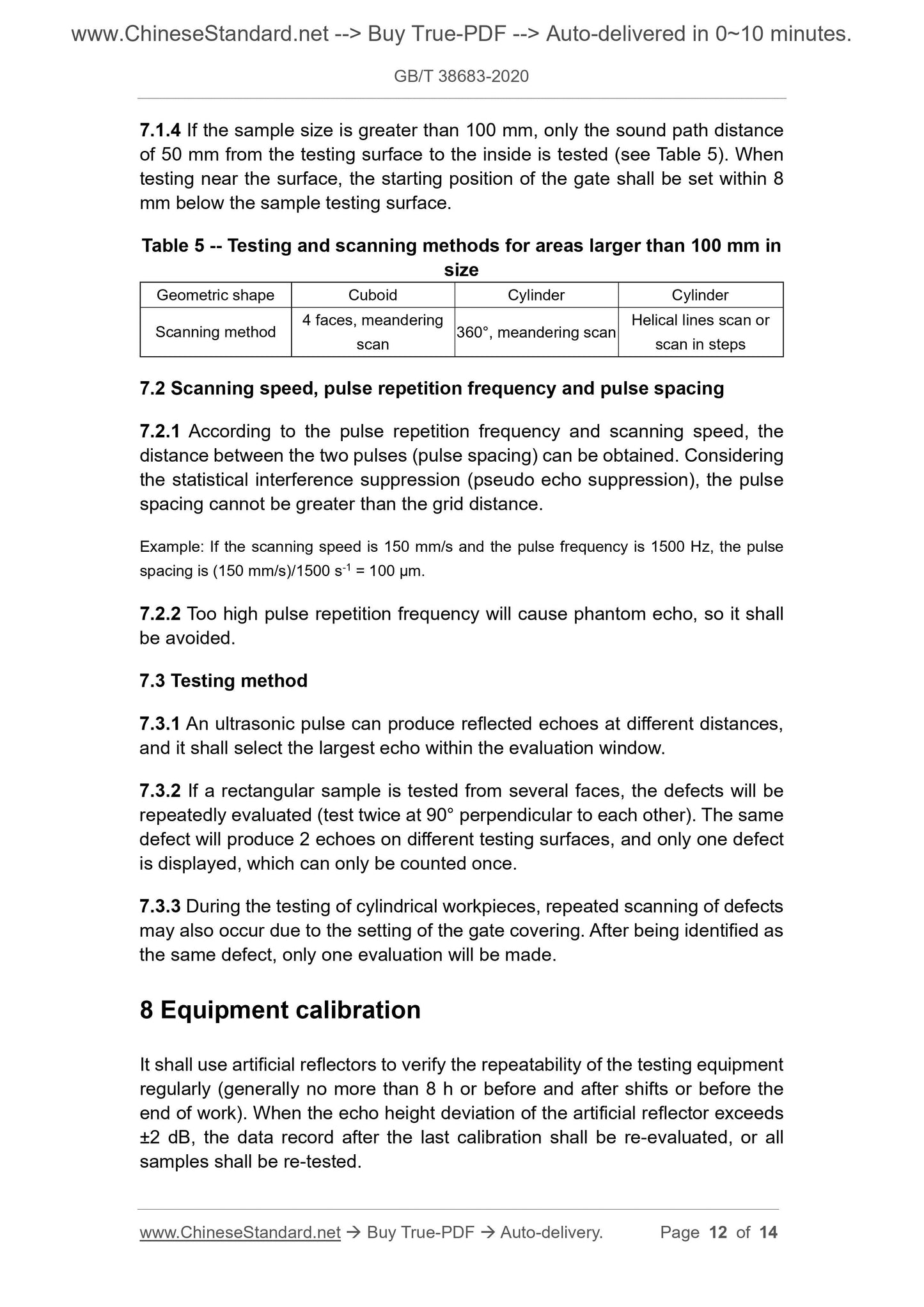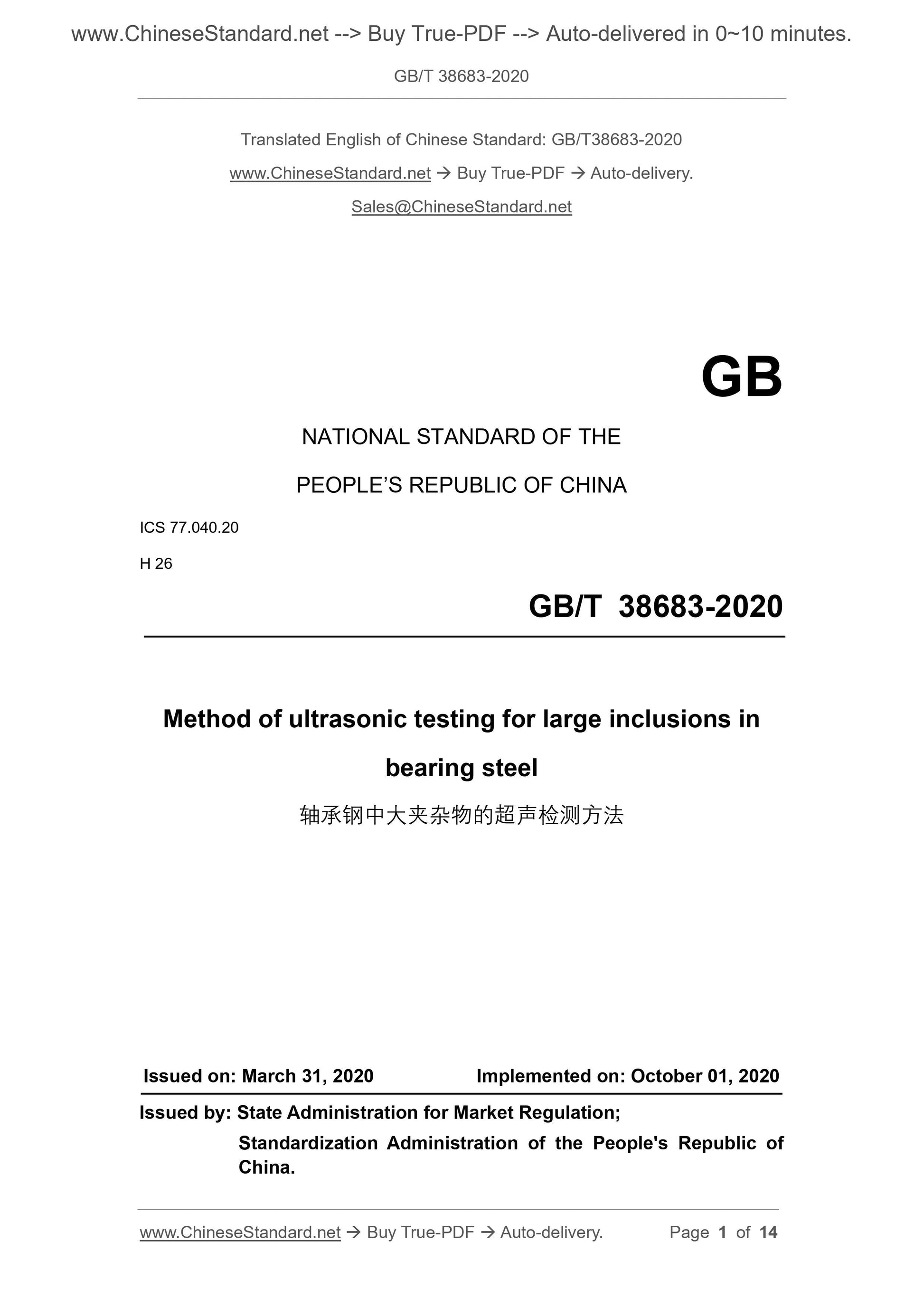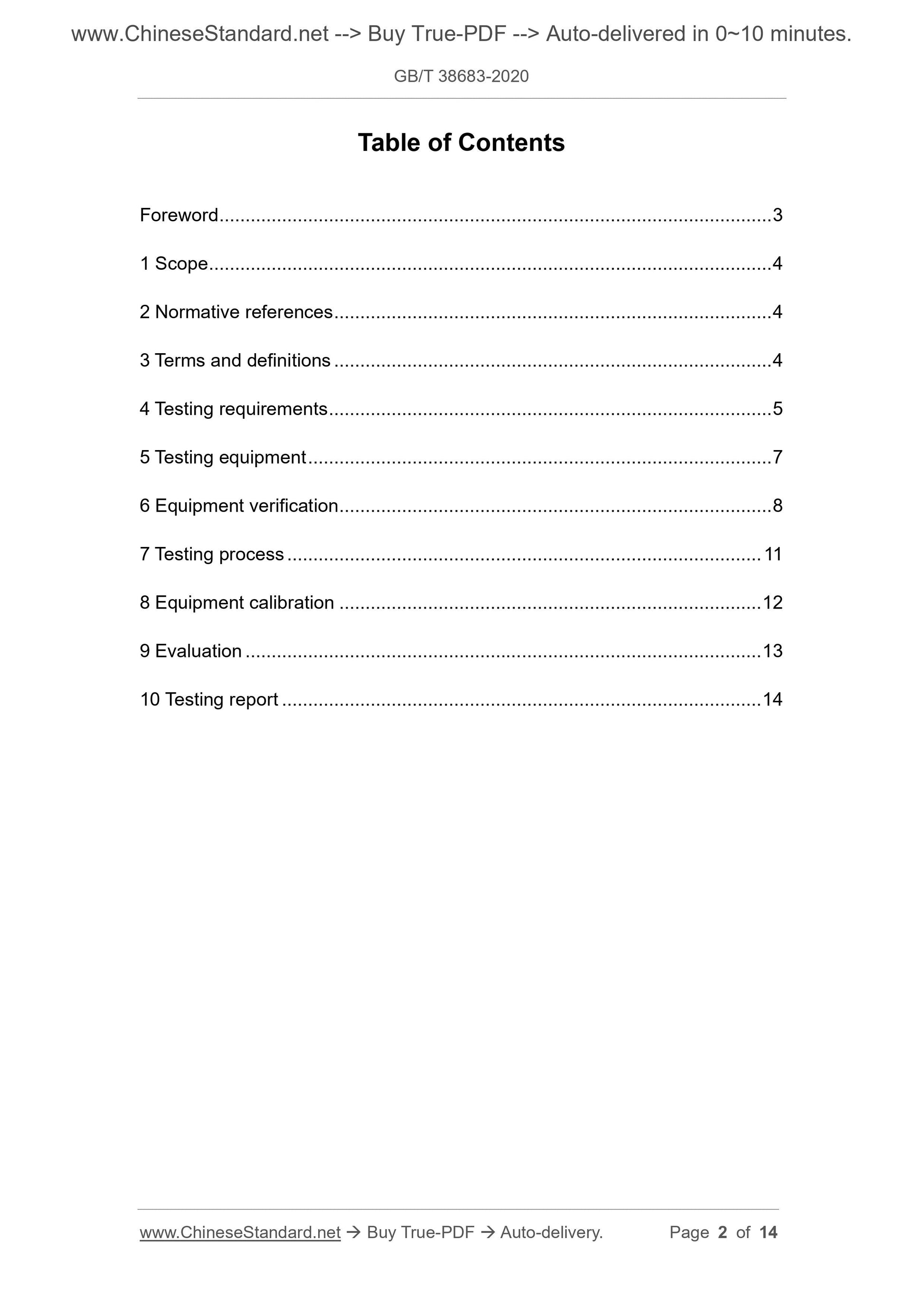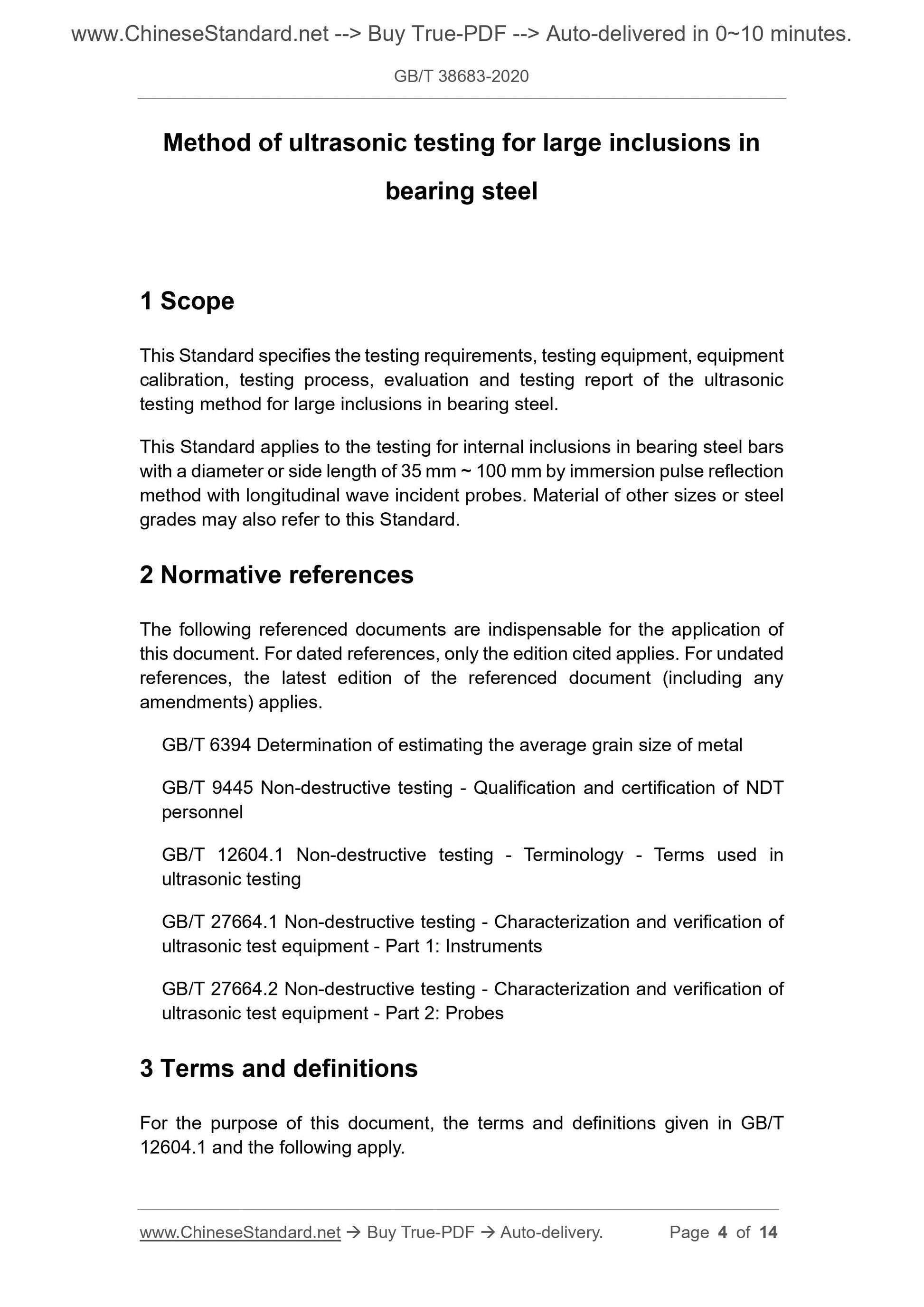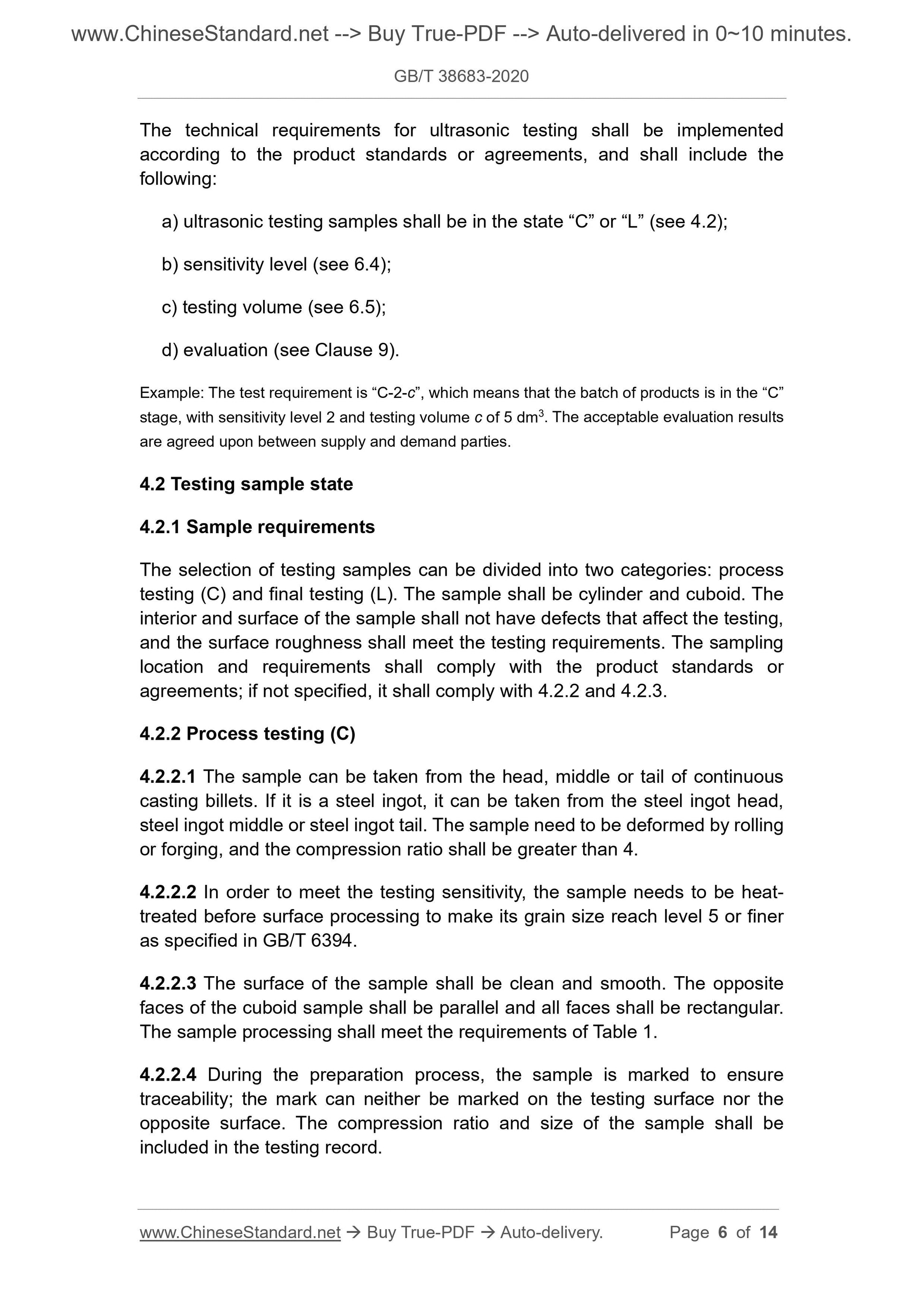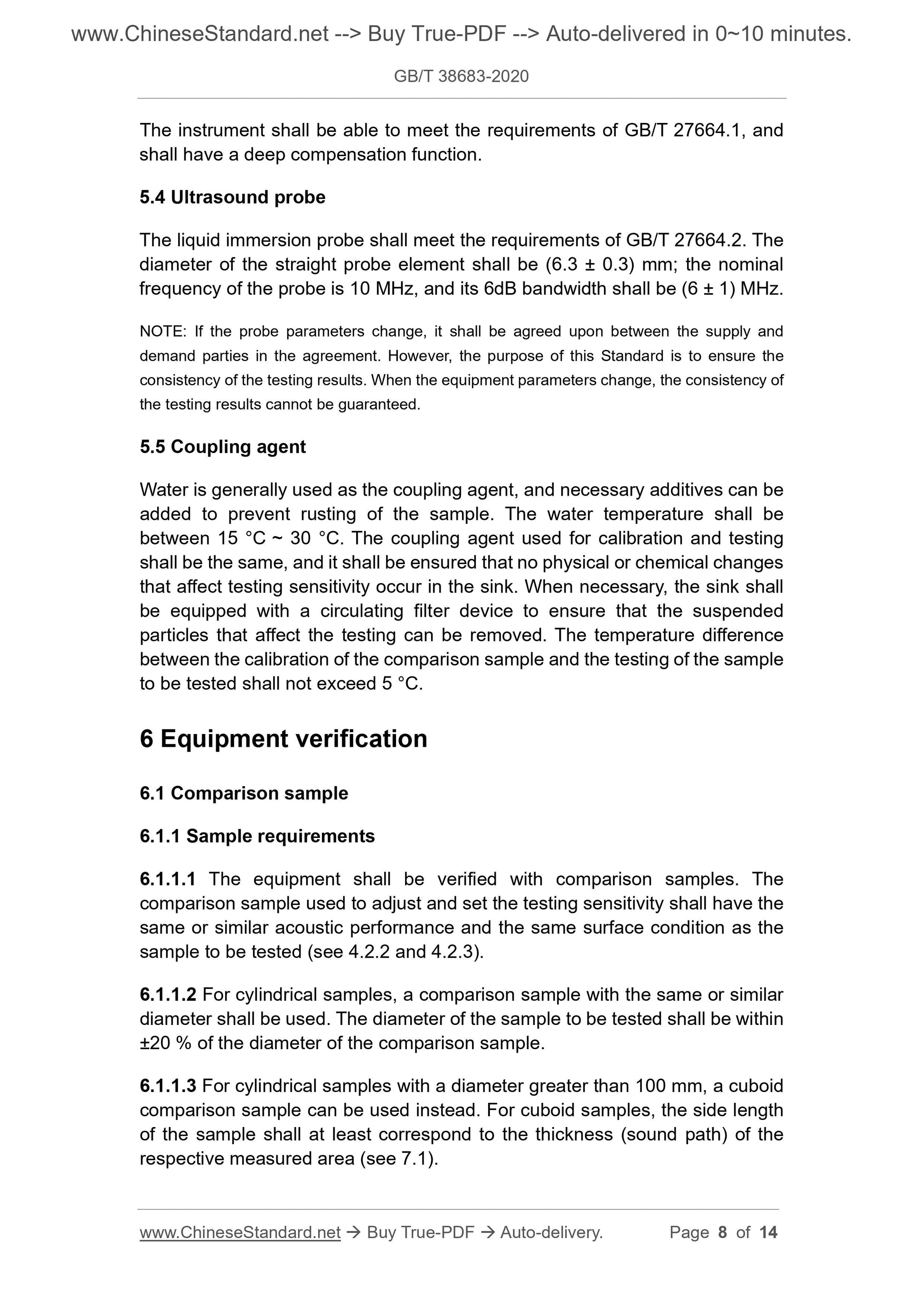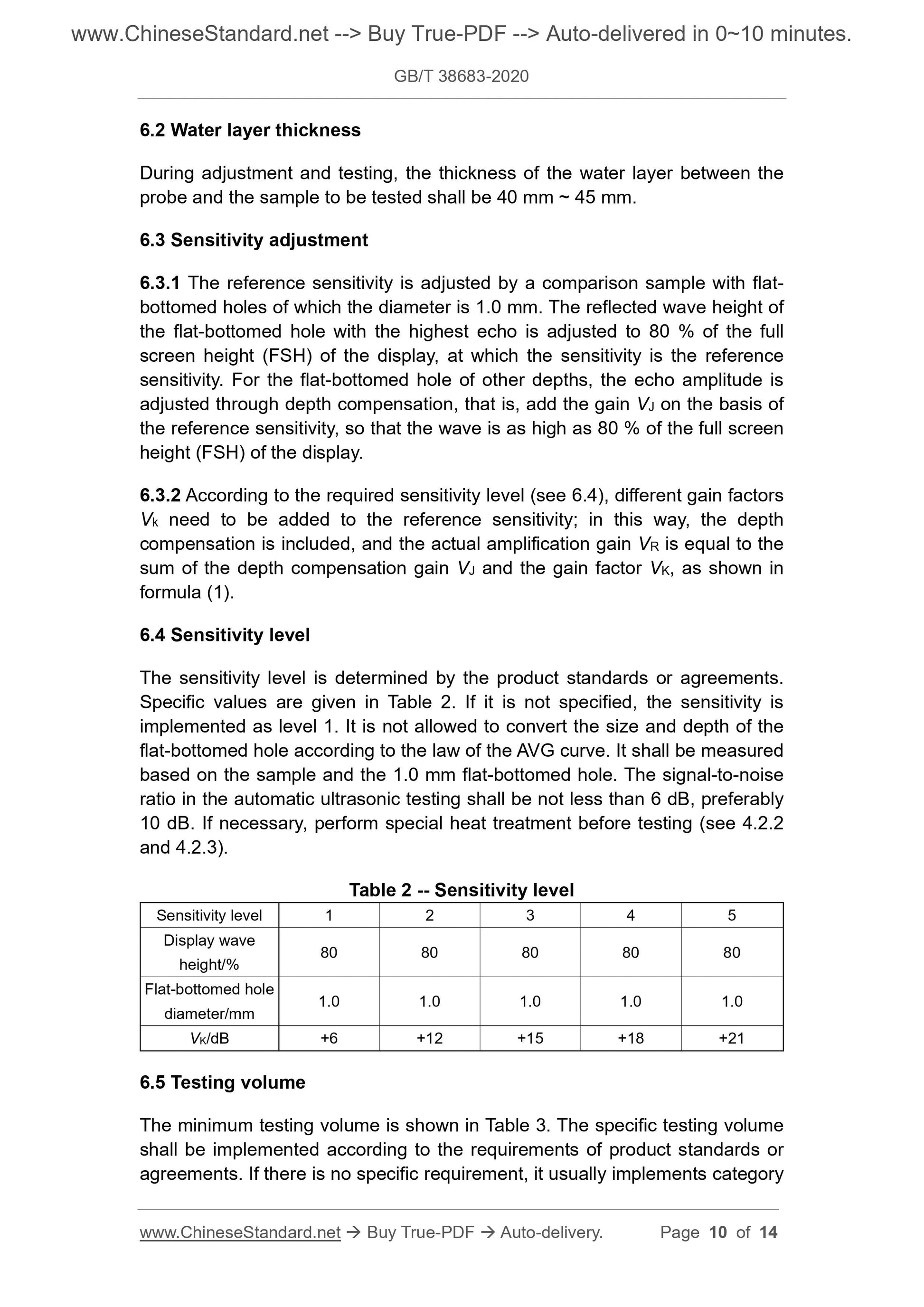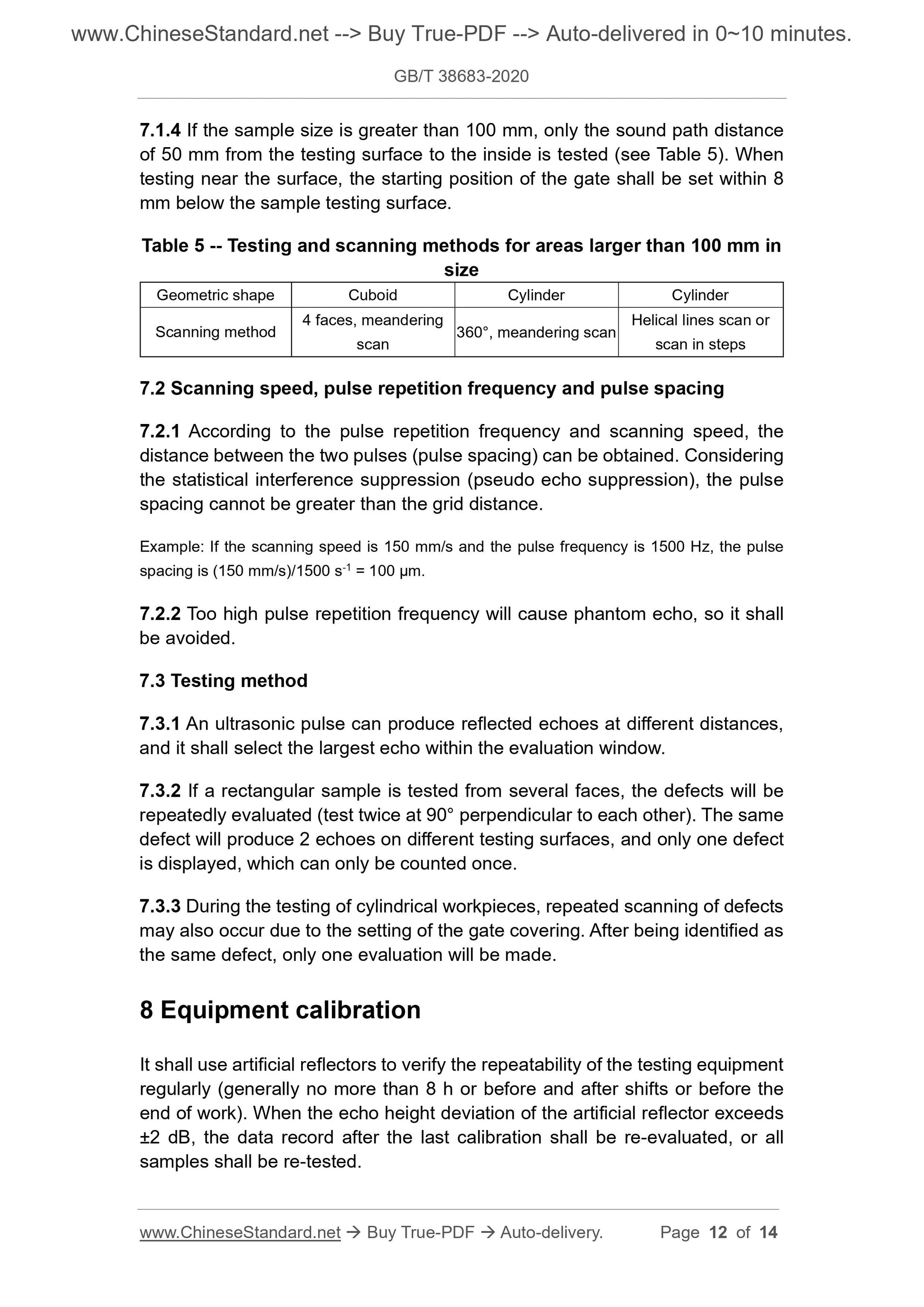1
/
of
7
www.ChineseStandard.us -- Field Test Asia Pte. Ltd.
GB/T 38683-2020 English PDF (GB/T38683-2020)
GB/T 38683-2020 English PDF (GB/T38683-2020)
Regular price
$185.00
Regular price
Sale price
$185.00
Unit price
/
per
Shipping calculated at checkout.
Couldn't load pickup availability
GB/T 38683-2020: Method of ultrasonic testing for large inclusions in bearing steel
Delivery: 9 seconds. Download (and Email) true-PDF + Invoice.Get Quotation: Click GB/T 38683-2020 (Self-service in 1-minute)
Newer / historical versions: GB/T 38683-2020
Preview True-PDF
Scope
This Standard specifies the testing requirements, testing equipment, equipmentcalibration, testing process, evaluation and testing report of the ultrasonic
testing method for large inclusions in bearing steel.
This Standard applies to the testing for internal inclusions in bearing steel bars
with a diameter or side length of 35 mm ~ 100 mm by immersion pulse reflection
method with longitudinal wave incident probes. Material of other sizes or steel
grades may also refer to this Standard.
Basic Data
| Standard ID | GB/T 38683-2020 (GB/T38683-2020) |
| Description (Translated English) | Method of ultrasonic testing for large inclusions in bearing steel |
| Sector / Industry | National Standard (Recommended) |
| Classification of Chinese Standard | H26 |
| Classification of International Standard | 77.040.20 |
| Word Count Estimation | 11,120 |
| Date of Issue | 2020-03-31 |
| Date of Implementation | 2020-10-01 |
| Issuing agency(ies) | State Administration for Market Regulation, China National Standardization Administration |
| Summary | This standard specifies the testing requirements, testing equipment, equipment calibration, testing process, evaluation and testing report of the ultrasonic testing method for large inclusions in bearing steel. This standard is applicable to the liquid immersion pulse reflection method longitudinal wave human radiation probe to detect the internal inclusions in bearing steel bars with a diameter or side length of 35 mm to 100 mm. Other sizes or steel materials can also refer to the implementation. |
Share

